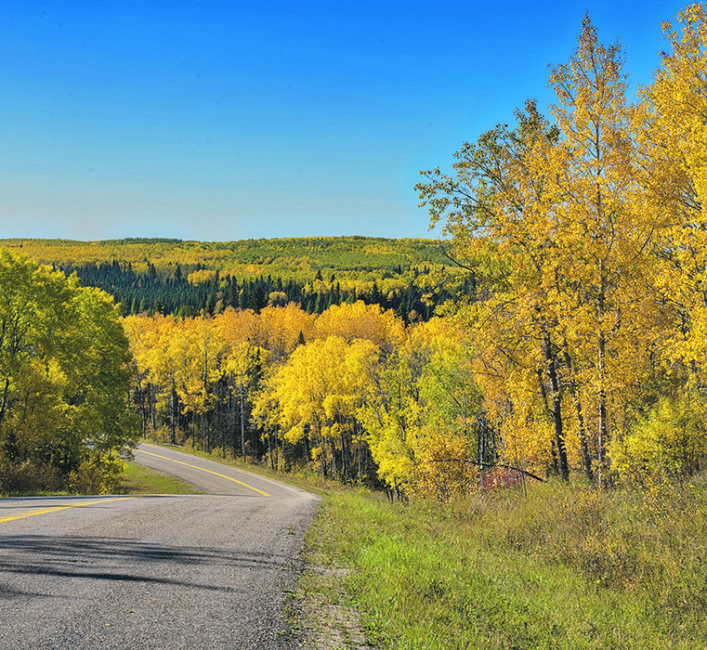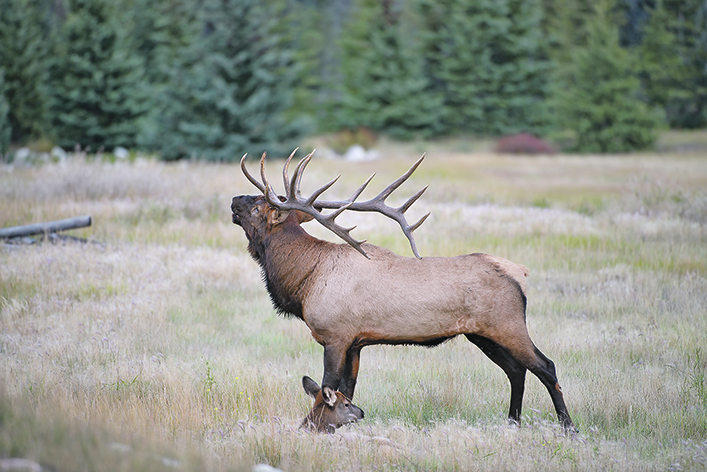Fall travel season is ideal for honing photography skills

Fall is our favourite time for travel in the West. The weather is still usually comfortable for camping, hiking, and fishing. Showy fall colours reach their peak and wildlife tends to be more active. A bonus is that the bugs have gone, along with summertime crowds.
The highlight for us is that it’s the ideal season for photography. Prime times for photographers are the golden hours just after sunrise and just before sunset when the light appears most flattering.
In mid-summer, we have to get up ridiculously early for sunrise, but in fall the sun has the good sense to rise at a more civilized time.
Photographing the night sky is also a lot easier.
In summer we often wait until the middle of the night to get a dark enough sky to photograph the stars, but now it’s dark by early evening.
Fall is a great time for wildlife sightings. In a previous column, we looked at the spectacular waterfowl migration. But there’s more to see than birds. Rutting season begins for many horned and antlered critters, the most impressive being male elk as they establish territory and try to impress females by strutting around and bugling, a piercing sound that often echoes kilometres away. Such high stakes sometimes lead to serious battles between bulls.
The best places to see the elk rut are usually in national parks because the lack of hunting pressure makes the animals less skittish around people. The Rocky Mountain parks, and Jasper in particular, are usually good bets.
In Saskatchewan, head to Prince Albert National Park, where elk often roam close to Waskesiu townsite.

A top hot spot in Manitoba is Riding Mountain National Park. The town of Onanole, just outside the park, even has a huge statue of a bugling elk as its mascot.
We have travelled to Grasslands National Park several times over the years, but our best trip for wildlife sightings was a visit in October. With cooler weather and fewer visitors, everything from deer to moose, bison, and coyotes were active. A unique feature of the park is huge colonies of black-tailed prairie dogs, the only place in Canada where we can see them in their natural habitat. We even came across a coyote snatching one for lunch.
For most photographers, the season’s main draw is fall colour displays. A straightforward shot of the forest or even a single tree is fine, but with a bit of planning and some simple techniques we can add another dimension to our images.
One way is to put the photos in context and give them a sense of place. For example, including a mountain peak as a backdrop in the image means that it is no longer just a photo of fall colours but rather fall colours in the Rockies. We can also incorporate rivers, lakes, waterfalls, badlands and various other landforms as backdrops to provide that sense of place.
Learn to embrace cloudy weather. While sunny weather is great for grand overview photos, cloudy weather can be preferable for many fall shots. This is especially the case when we try to photograph under the forest canopy. Sunny conditions can be intensely contrasty in the forest, with dark shadows and overly bright sunlight that filters through the canopy. A cloudy sky produces softer light with a better balance between shadows and highlights. When there are different hues in the scene, the softer light also makes it easier to capture subtle differences.

Mention fall colour and most people immediately picture the northern forest. But as most prairie folks know, grassland coulees, as well as southern river and creek valleys, can be even more vibrant because of the array of shrubs, grasses and other vegetation. Plus the colour tends to linger longer in the fall, usually after leaves on trees are gone.
Some prairie colour spots we like include Saskatchewan Landing Provincial Park in southern Saskatchewan, almost anywhere along the South Saskatchewan River Valley, and the Red Deer River Valley in Alberta.
Among our favourite fall photos is the ground cover and shore of an alkali lake where we see plenty of dazzling tones but not a tree or shrub in sight.
This is the time of year to head out to see what you can find and enjoy the many shades of this special season.
Arlene and Robin Karpan are well-travelled writers based in Saskatoon. Contact: travel@producer.com.
Source: producer.com

